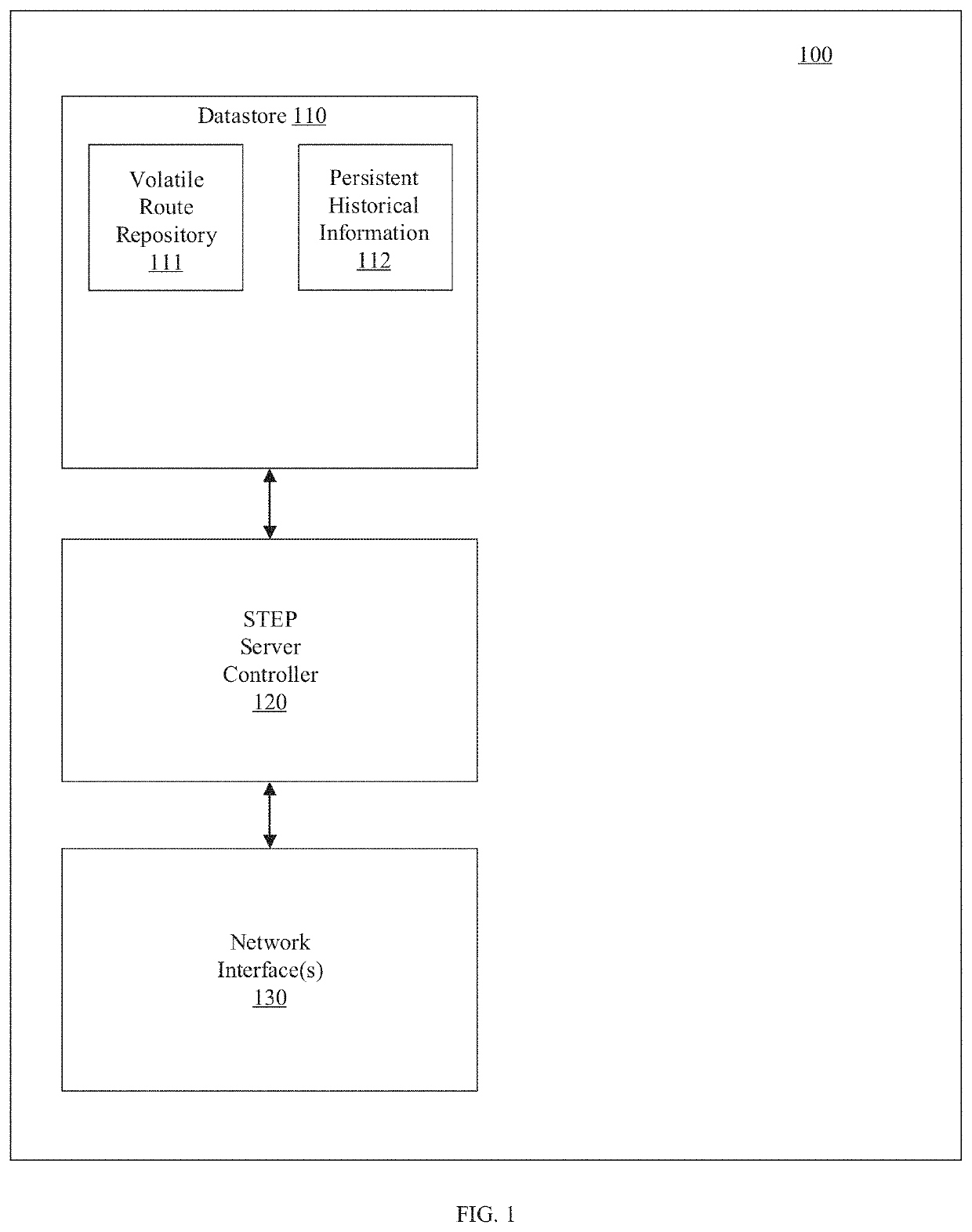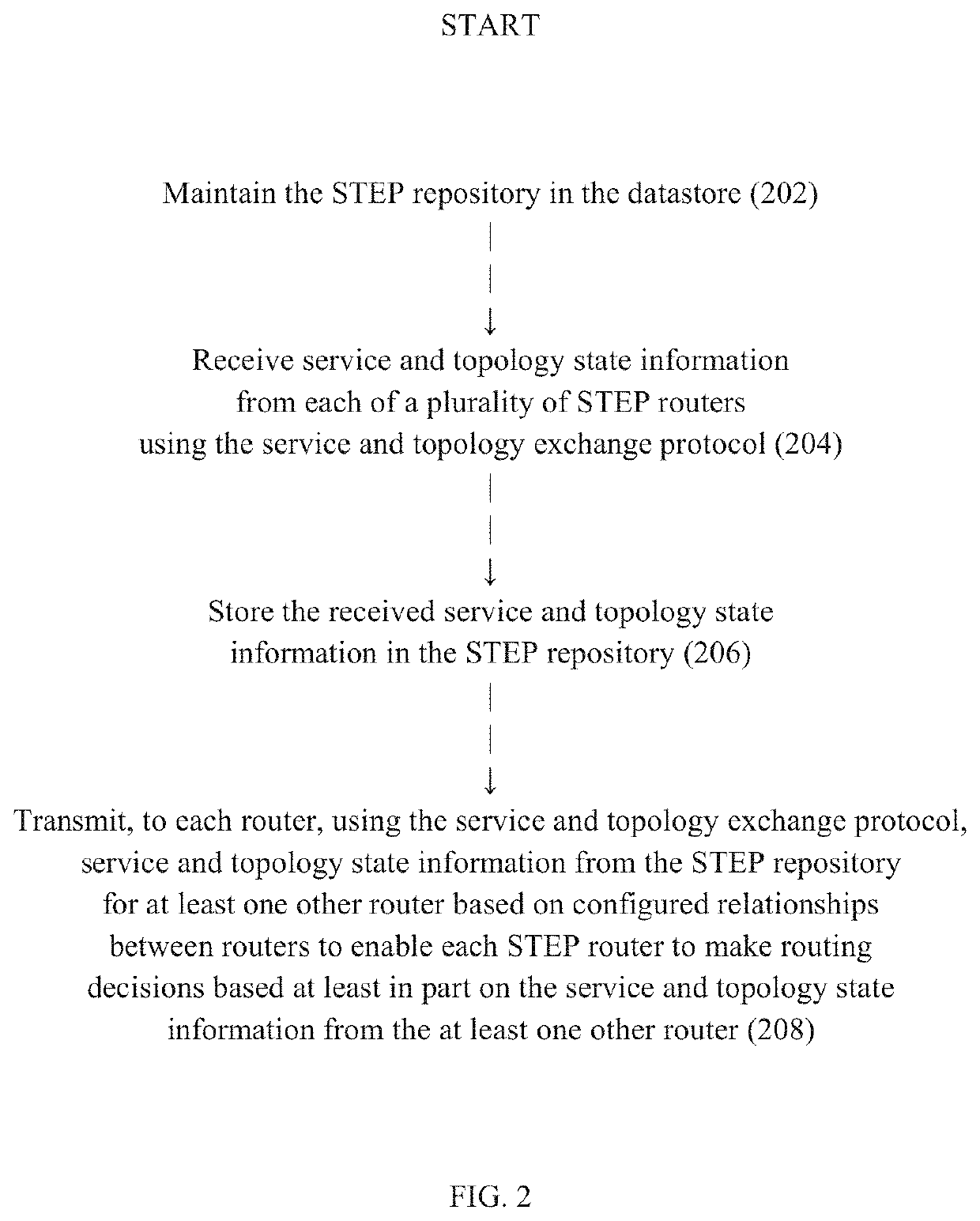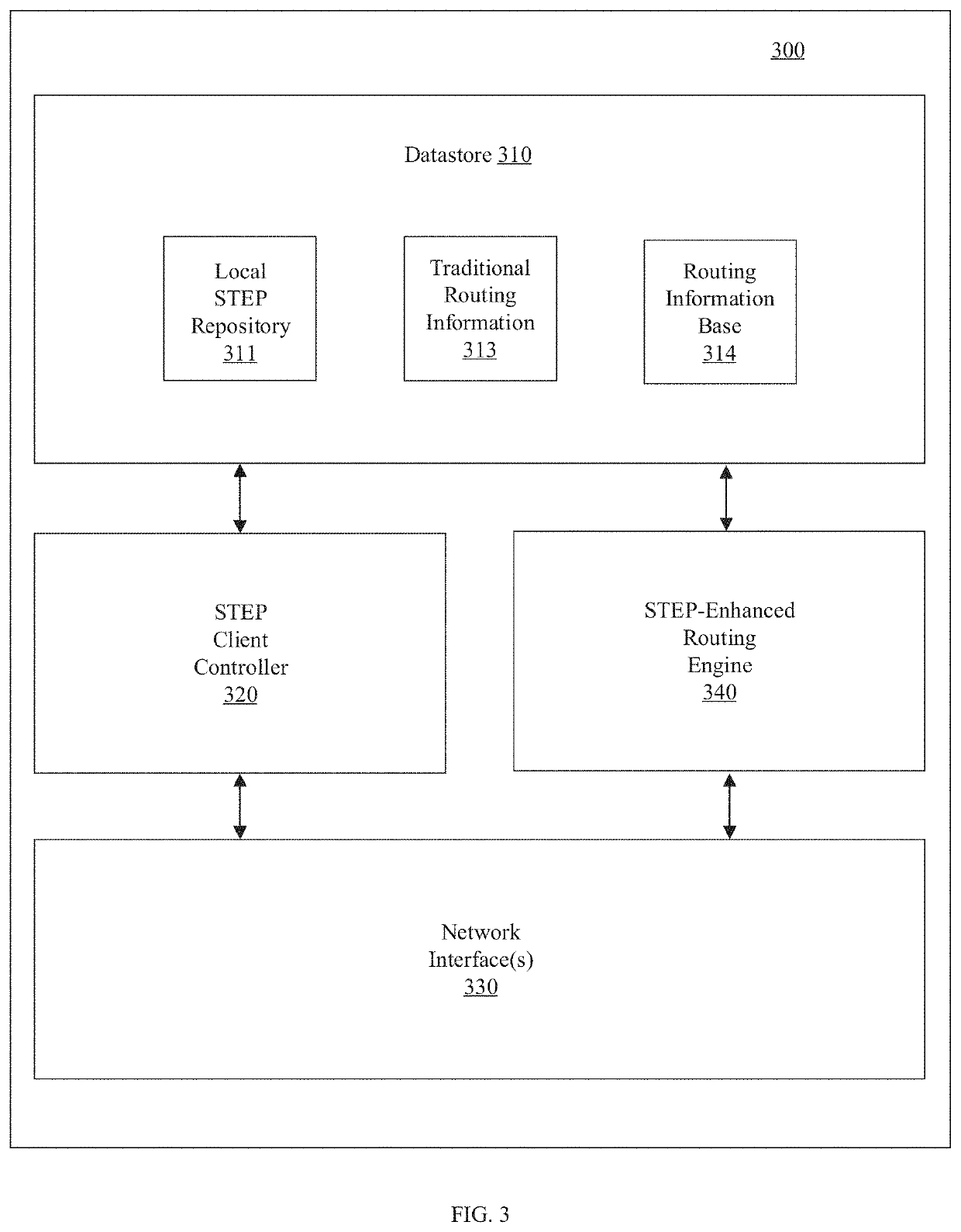Source-based routing
a technology of source-based routing and communication network, which is applied in the direction of data switching network, digital transmission, electrical equipment, etc., can solve the problems of incorrect packet routing of packets, large number of service configuration of ssrs, and inability to have visibility into ssrs
- Summary
- Abstract
- Description
- Claims
- Application Information
AI Technical Summary
Benefits of technology
Problems solved by technology
Method used
Image
Examples
Embodiment Construction
[0007]In accordance with one embodiment of the invention, a routing system for routing packets for a route or service comprises a plurality of routers including a source router. The source router is configured to receive, using a service and topology exchange protocol, service and topology state information from a STEP repository for at least one other router based on configured relationships between routers; determine a first path to a destination for a route or service based on the service and topology state information, the first path including an ordered list of successive routers to receive a packet associated with the route or service starting with a first successive router and ending with a destination router; and transmit a packet toward the first successive router with first metadata including a list of at least one remaining router of the ordered list of routers to receive the packet associated with the route or service. Each successive router, starting with the first succ...
PUM
 Login to View More
Login to View More Abstract
Description
Claims
Application Information
 Login to View More
Login to View More - R&D
- Intellectual Property
- Life Sciences
- Materials
- Tech Scout
- Unparalleled Data Quality
- Higher Quality Content
- 60% Fewer Hallucinations
Browse by: Latest US Patents, China's latest patents, Technical Efficacy Thesaurus, Application Domain, Technology Topic, Popular Technical Reports.
© 2025 PatSnap. All rights reserved.Legal|Privacy policy|Modern Slavery Act Transparency Statement|Sitemap|About US| Contact US: help@patsnap.com



